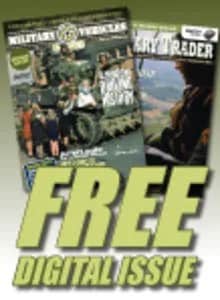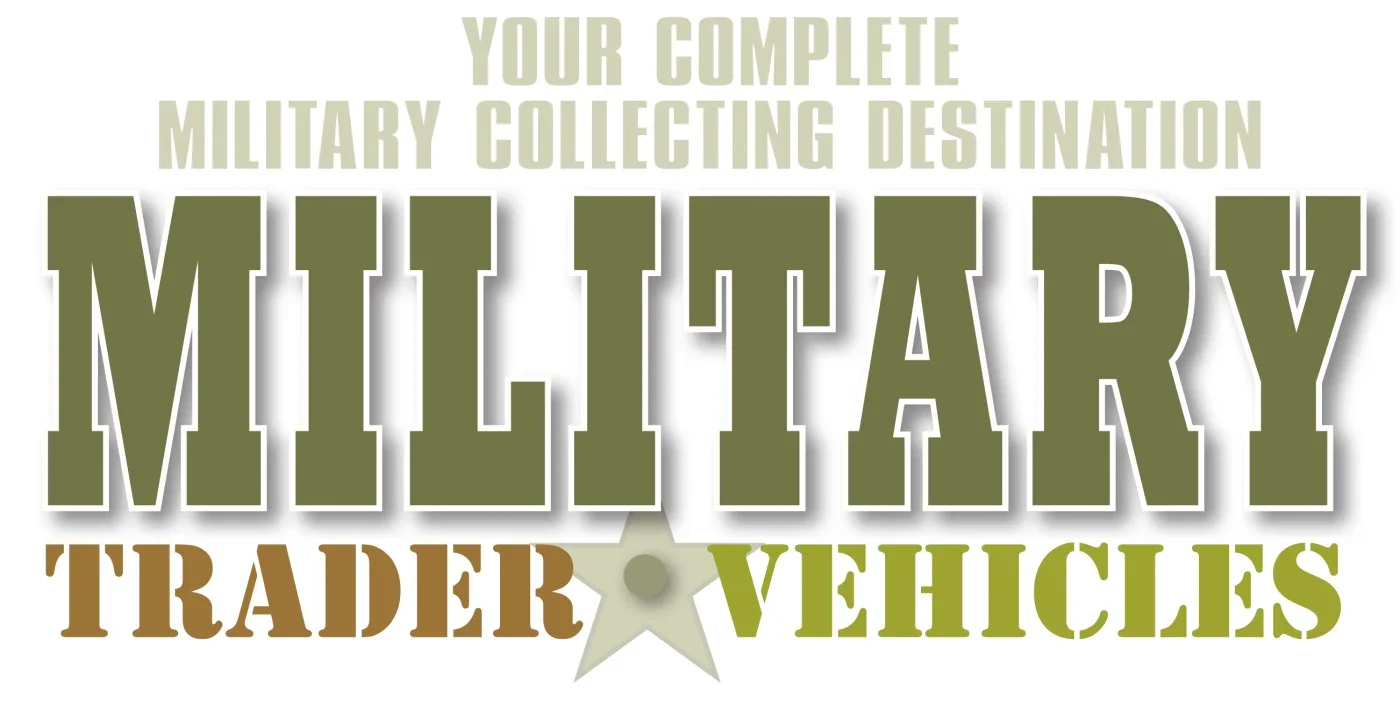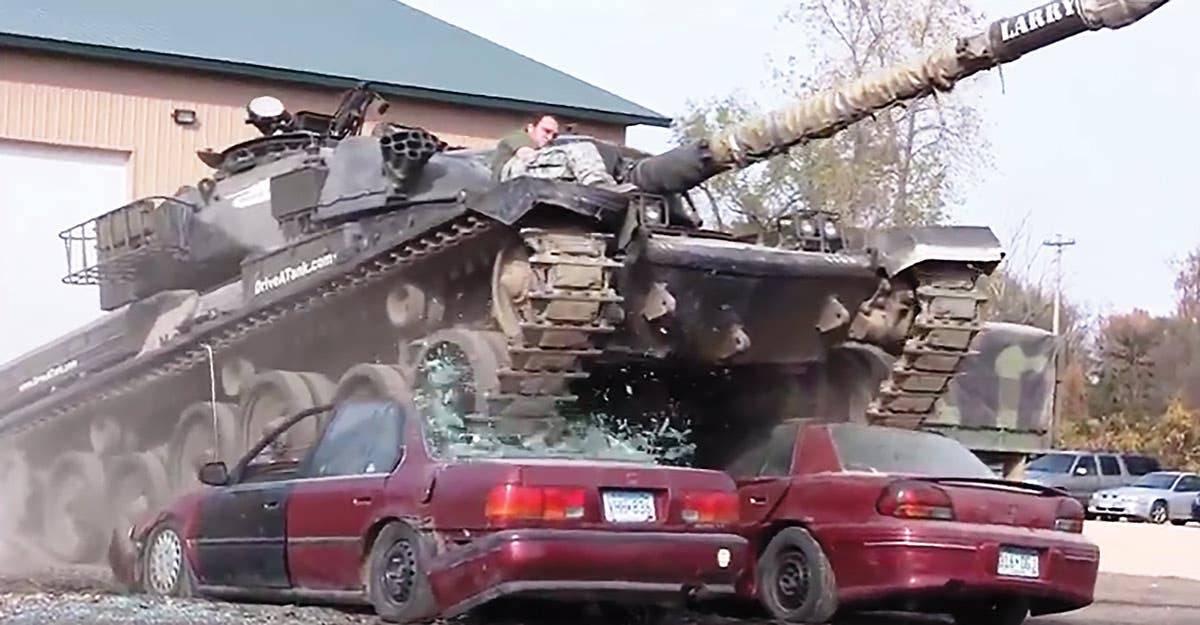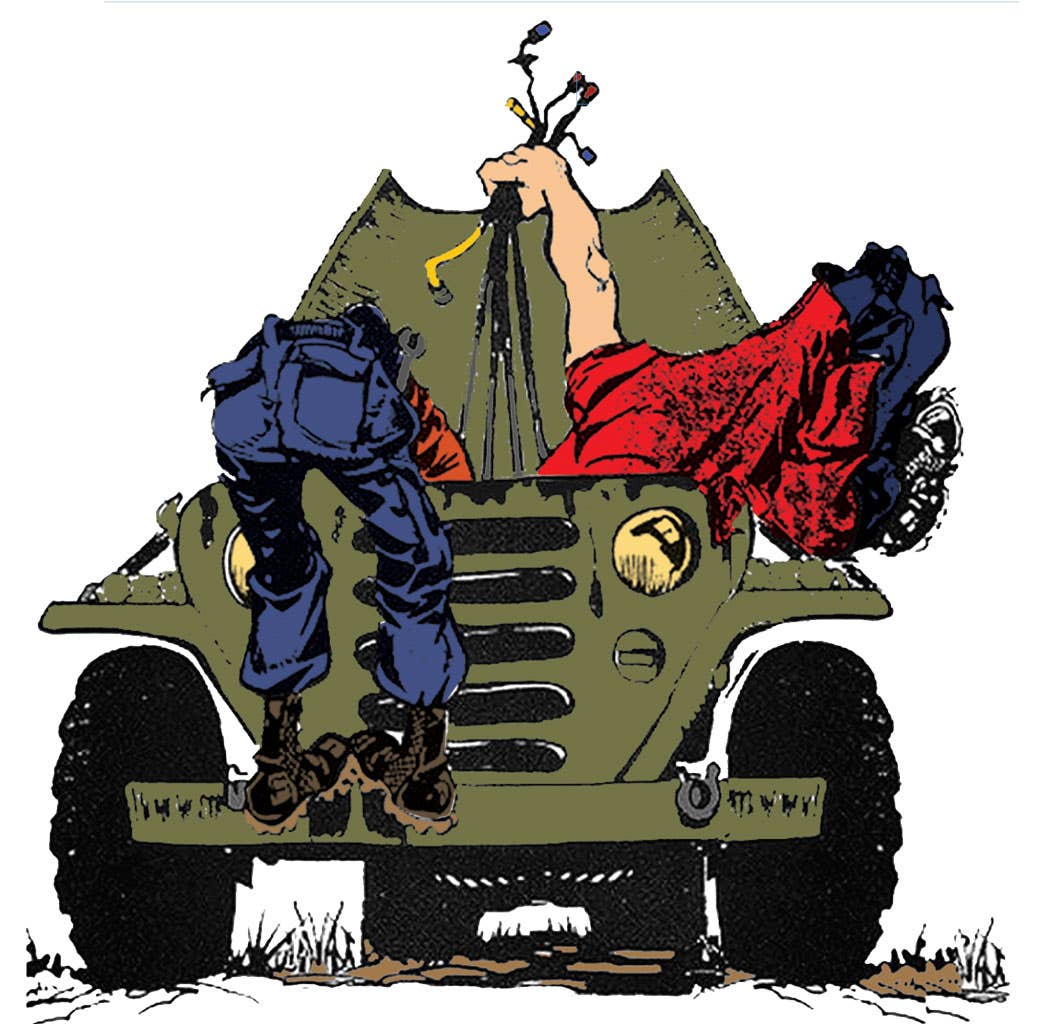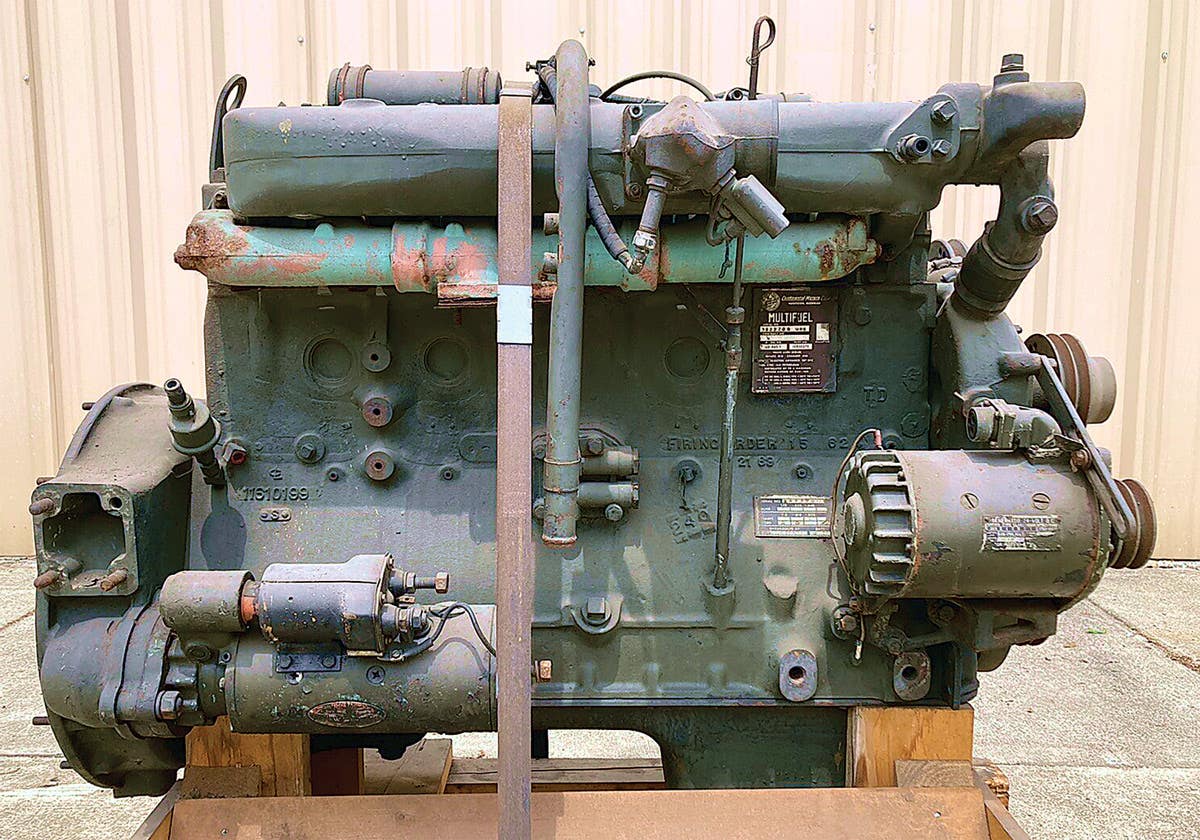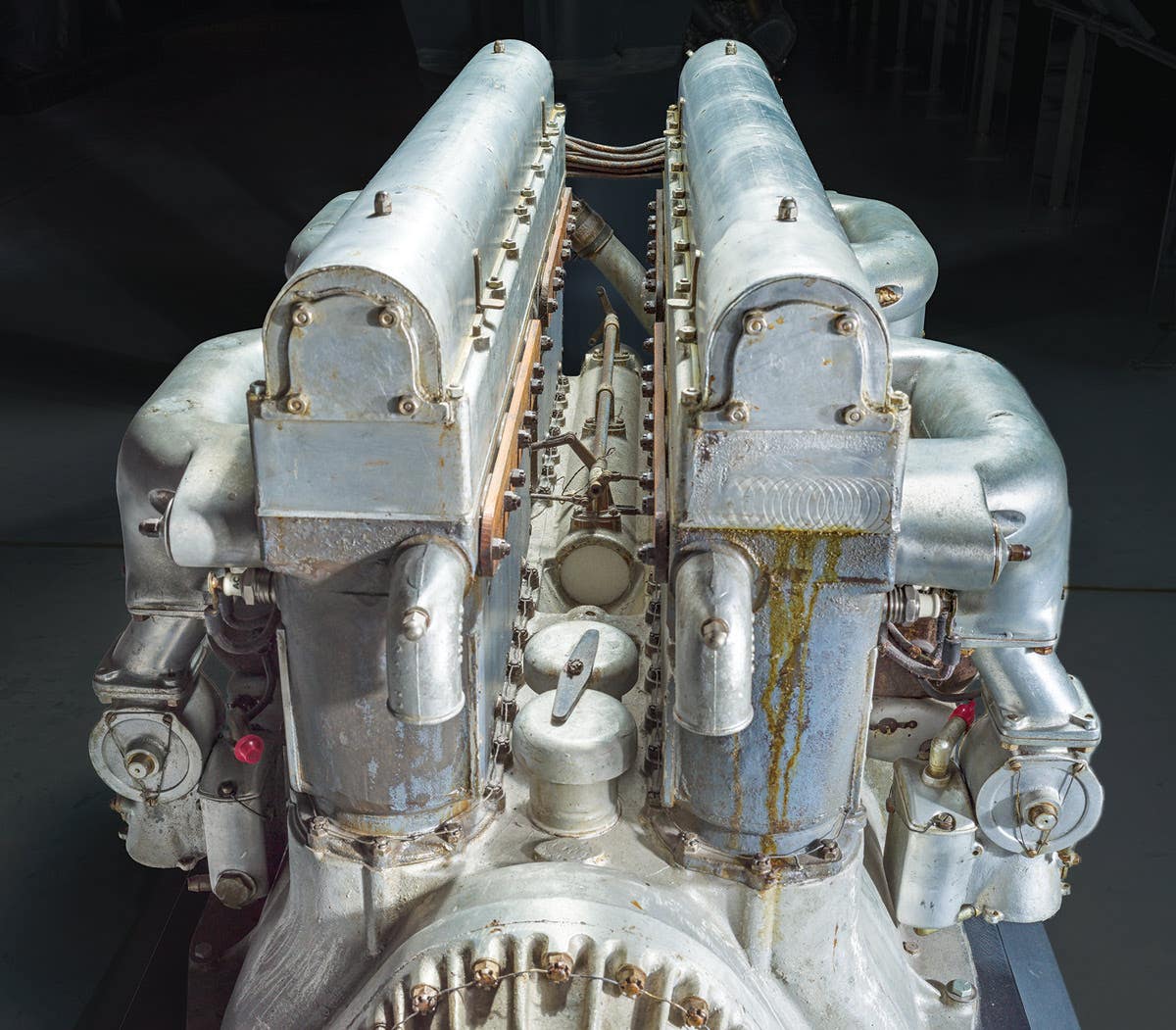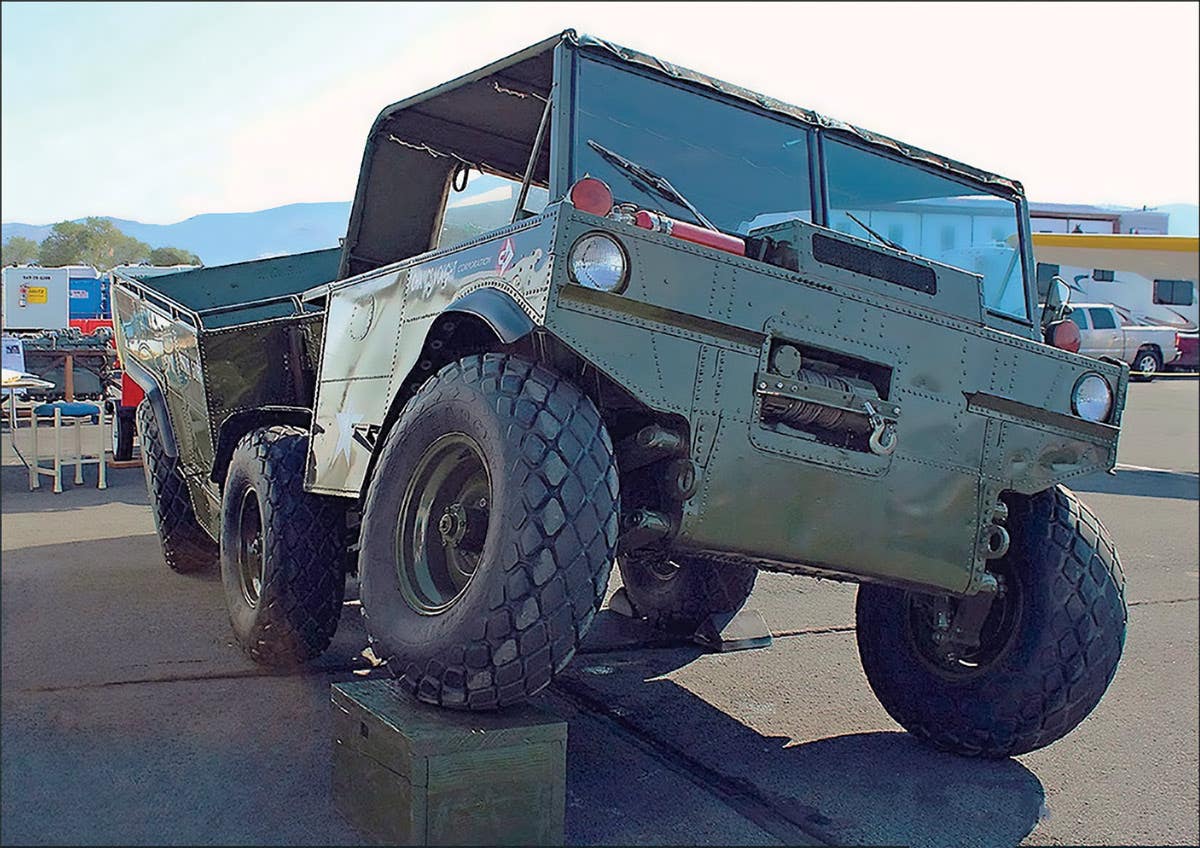Burma Jeeps: Were there any in Burma?
Ask many Historical Military Vehicle enthusiasts why the Ford GTB (G-622) is commonly called a Burma Jeep and one will usually get some explanation pointing to the ‘Burma Road.”
Ask many otherwise knowledgeable Historical Military Vehicle enthusiasts why the Ford GTB (G-622) is commonly called a Burma Jeep and one will usually get some version of what seems like a logical answer: “They were used in Burma during World War II on the Burma Road.”
This explanation seems generally accepted — even by Wikipedia — and few people question it. I accepted it myself when first seeing a Ford GTB in the 1970s. The vehicle belonged to man who lived in the Arizona desert about thirty miles from Tucson near a large copper mine where the company I worked for was doing a salvage operation. He called it a Burma Jeep; and I rented it from him for about three months at company expense and quickly grew very fond of it, not only for its useful work capabilities, since it was fitted with a front-mounted winch, but also for off-time desert exploration, so I must also plead guilty to propagating what seems to be the Burma Jeeps in Burma myth. It wasn’t until years later, after acquiring more knowledge of vintage U.S. military vehicles, that I began to wonder why these vehicles were called Burma Jeeps, since my casual research during pre-Internet times could find no substantial evidence that they were actually deployed in Burma during World War II. Nor has my subsequent research with the aid of the Internet provided any solid proof that GTBs were utilized in either the building of or transport of cargo on the Burma Road, despite the oft-repeated claim that they were “used extensively” on that massive project. I have, however, come up with what seems a plausible theory as to how and why GTBs came to be nicknamed Burma Jeeps, but please understand that I don’t consider myself to be a military vehicle historian and my research was done to satisfy my personal curiosity.
the author has yet to find a verifiable photo of a Ford GTB being used on that route. Steve Turchet
First a bit of history. What is ambiguously called the Burma Road was actually three separate roads built at different times. The true Burma Road was constructed in response to the Japanese occupation of Manchuria in 1931, which resulted in the Second Sino-Japanese War, which continued with sporadic fighting throughout the 1930s. In 1937 full-scale war broke out and Japan occupied most of coastal China and therefore controlled the shipping ports. This forced the Chinese to seek another way to bring in supplies and war materials. A route from Kunming, China to a railhead at Lashio, Burma was completed in 1938. Supplies were landed at Rangoon, Burma and brought by rail to Lashio. Since this road was built by the Chinese and completed in 1938, the U.S. military was not involved. And, since GTBs were not manufactured until 1942, they obviously could not have been used in the building of or the transport of cargo on that first section of the Burma Road.
Next we come to the Ledo Road. Japan invaded and occupied Burma in early 1942, cutting off the original Burma Road supply line to China. Allied war planners scrambled to build a new road through the mountains and jungles of northern Burma from Ledo, Assam, India, to bypass the cut-off Burma Road. Supplies landed at Karachi and Calcutta, India were to be brought by rail to Ledo, then trucked over the new road to China. The Ledo Road was completed by U.S. Army Engineers in early 1945. It ran 465 miles from Ledo to a junction with the old Burma Road at Mongyu, Burma, near Wanting, China. Given these facts, one might logically conclude that this was the connection between Burma and GTBs. U.S. Army, GTBs existed in 1945, therefore could have been used on the Ledo Road.
The road ran through a mountain range several thousand feet tall, which required removal of 100,000 cubic feet of earth for every mile constructed. All this
work was accomplished by 15,000 American soldiers and 35,0000 locals. This section of the road is still in use. Steve Turchet
This possible explanation seems bolstered by the third Burma Road, often called the Stilwell Road. In addition to building the Ledo Road, U.S. Army Engineers and local workers also upgraded over 600 miles of the original Burma Road. The Ledo Road and the upgraded portion of the Burma Road from Mongyu to Kunming were later named Stilwell Road at the suggestion of Chinese Generalissimo Chiang Kai-shek, in honor of American General Joseph W. Stilwell, Commander of the China-Burma-India Theater. The Stilwell Road ran 1079 miles from Ledo, India to Kunming, China.
One might conclude that this could explain how the GTB got its nickname. While these vehicles didn’t exist when the original Burma Road was built, they were in U.S. Military service when the Ledo and Stilwell Roads were built, so they could have been involved in the construction and operation of those roads.
Seems logical, doesn’t it? But, if so, and if GTBs were “extensively used” in large enough numbers to earn their persistent nickname, why are there no photographs (at least none I’ve been able to find) among the hundreds of photos of U.S. military vehicles on the Burma, Ledo and Stilwell Roads during WWII? And, after meeting several veterans who worked on and/or drove the Ledo and Stilwell Roads, why do none of them recall ever seeing a GTB?
designed and built for, though it seems doubtful if any were actually used on that route. Note the CMP (Canadian Military Pattern) truck in the background. Steve Turchet
The true origin of and explanation for the Burma Jeep nickname may be due to the Army. To quote from one of many articles:
“U.S. Army General Joseph Stilwell had already defeated a Japanese attempt to capture northern Burma and it was in this territory that military engineers constructed the Ledo Road, which connected Ledo Assam, India to the Burma Road at Kunming, Yunnan, China. The first 100 miles were underway by December of 1942 and consisted of a steep, narrow passage running from Ledo through the Pangsau Pass and down into Burma. The road ran alongside a mountain several thousand feet tall, which required removal of 100,000 cubic feet of earth for every mile constructed. All this work was accomplished by 15,000 American soldiers and 35,0000 locals. Vehicles were needed that could manage the unforgiving road conditions and terrain.”
fuel and military supplies from Calcutta, India to Chungking, China over the Burma Road. According to a veteran who drove in that convoy, the vehicles were
mainly “six-by-sixes (GMC CCKWs) and jeeps.” Note “U.S. Navy” on the front bumper of the jeep on the right. Steve Turchet
OK, here is what seems like the logical Burma Road/GTB connection:
“A U.S. initiative gave rise to the famous “Burma Jeep,” officially designated Ford GTB 1.5-ton truck (G-622). The vehicle was designed and built with military-minded qualities of good maneuverability and a compact turning radius (32 feet). The design was given a short wheelbase and a low profile. The vehicle lacked any sort of conventional cab with just a simple folding windscreen ahead of the two-man crew. The nose of the vehicle was very short, providing the driver with good visibility when climbing steep slopes, while the engine protruded into the minimal cab area between the driver and passenger, the protrusion being housed under an access cover. The driver’s station was simplistic with a large, three-spoke steering wheel, engine-monitoring instruments and speedometer, and necessary controls, gear-shift levers and foot pedals. The passenger’s seat faced the driver’s position instead of facing forward due to lack of foot room and folded for stowage.
The powerplant was a Ford Model G8T 4-cycle, 6-cylinder L-Head inline engine of 90 horsepower at 3,400 rpm, allowing for a top allowable road speed of 45 mph with a 9 mpg rating. Transmission was a 4-speed manual with 2-speed transfer case driving Timken axles. Electrical system was 6 volts. 20-inch road wheels were standard with a space holed out of the left side of the truck for a single spare. GTB trucks could also tow cargo trailers.”
were involved in either building the road or transporting cargo Steve Turchet
These, along with the Dodge WC54 ambulance, are frequently seen in WWII Burma Road photos. Steve Turchet
So far, so good, right? Here we have a truck specially designed by Ford for use in Burma. Yay! But now we come to the Army glitch…
“Originally, the GTB was developed for the U.S. Army which, at the time, did not think highly of the vehicle: it was U.S. Navy authorities who felt the truck could be of use.”
Now the origin of the nickname — oxymoronic because there are seemingly no records, photos, or participant’s memories of GTBs in Burma during WWII — begins to make a little sense: Ford, after losing out to Willys on the 1/4 ton truck (jeep) contract, designed a “Burma Jeep” for use on the Burma Road… but the U.S. Army didn’t want it. (Some may be aware that the Army, at first, didn’t want the highly successful GMC DUKW, either.) However, the U.S. Navy and Marine Corps were happy to have the GTB, and most of the vehicles were sent to the Pacific Theater, though some did serve in Europe and may also have been used in the Korean Conflict.
Burma Jeeps being involved, the majority of cargo vehicles apparently being GMC CCKWs. Steve Turchet
It’s interesting that in early August of 1945 the U.S, Navy in conjunction with The Sino-American Cooperative Organization (SACO) sent a truck convoy carrying food, fuel and military supplies from Calcutta, India to Chungking, China over the Burma Road, and no GTBs appear in any of the photos this author has seen, the vehicles seeming primarily GMC CCKWs and jeeps. A side note to this is that a Japanese sniper was reportedly shot and killed along the way, which seems sadly ironic since Emperor Hirohito was to announce the surrender of Japan on August 15.
Anyway, that’s my theory: the Burma Jeep nickname — a “jeep” designed by Ford for use in Burma — simply stuck; and most military personnel only assumed GTBs were being used in Burma.
Were there any Burma Jeeps in Burma during WWII? It seems possible that a few might have been deployed there by the Navy and Marine Corps for shipping port, base, and coastal operations, but the facts I’ve found don’t seem to indicate that GTBs saw any service on the Burma Road.
Looking for more articles on jeeps? Here are a few more for your reading enjoyment.
